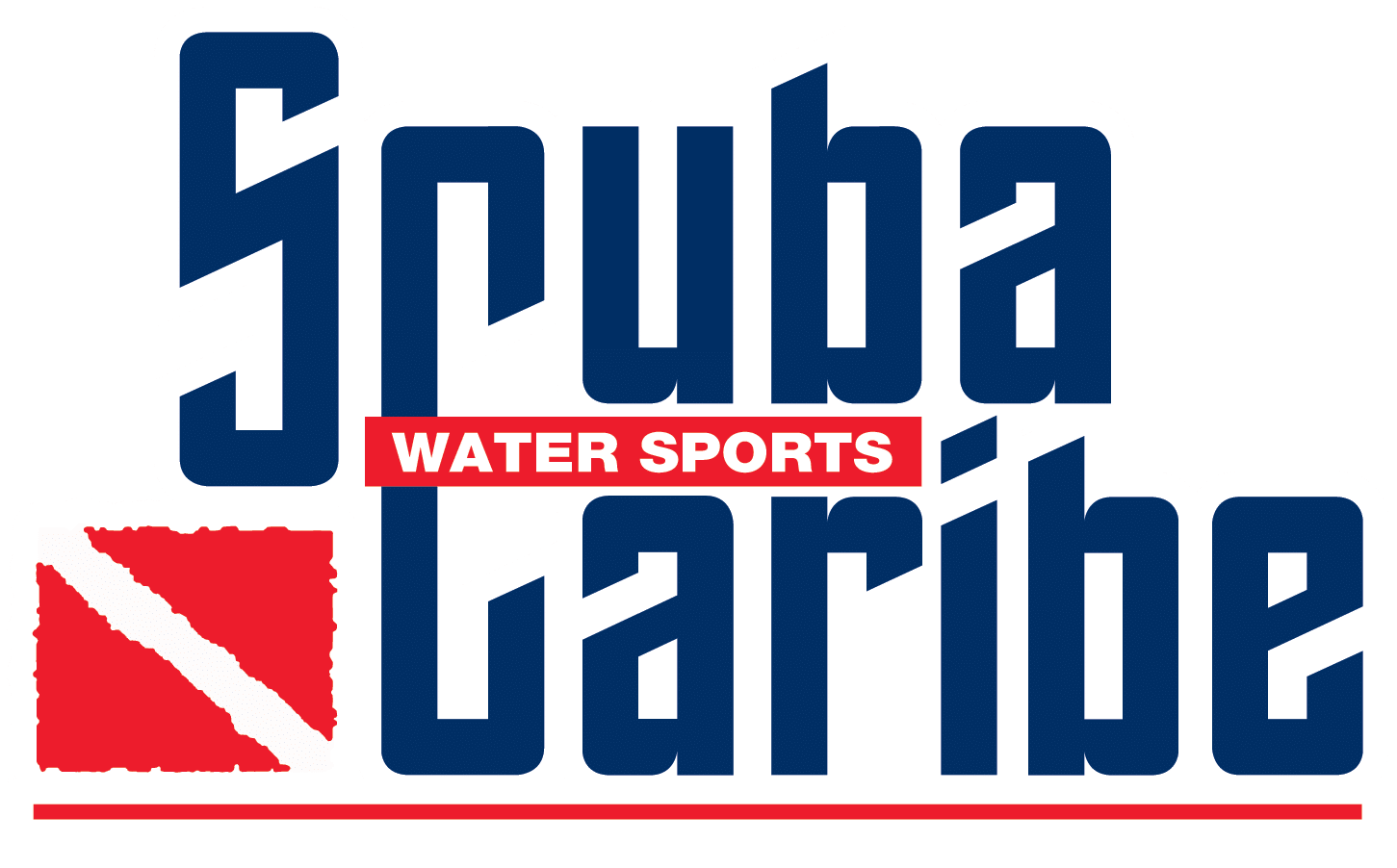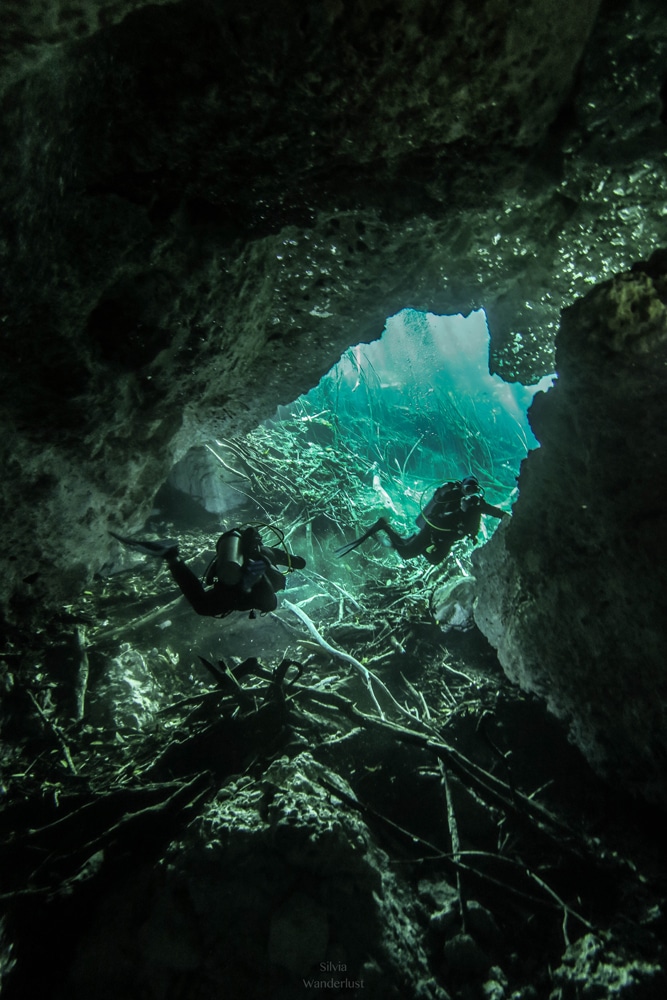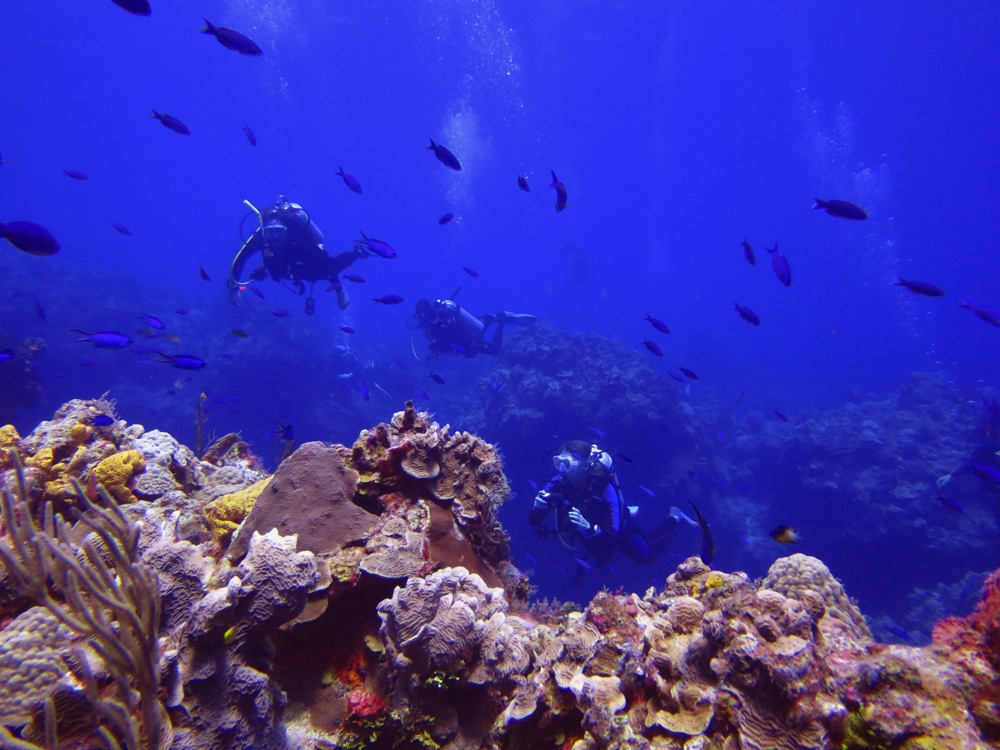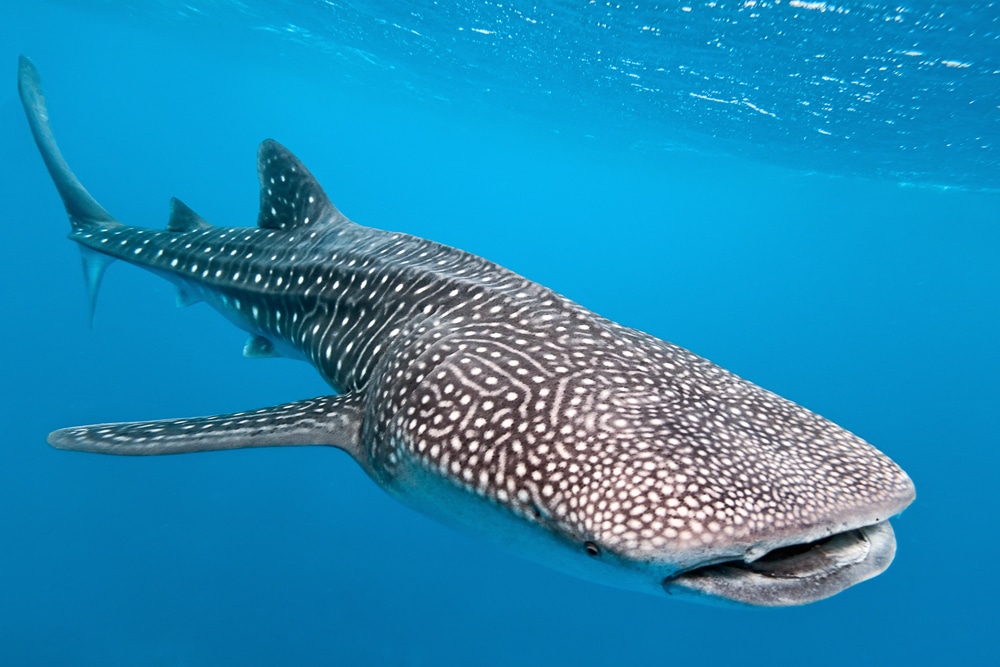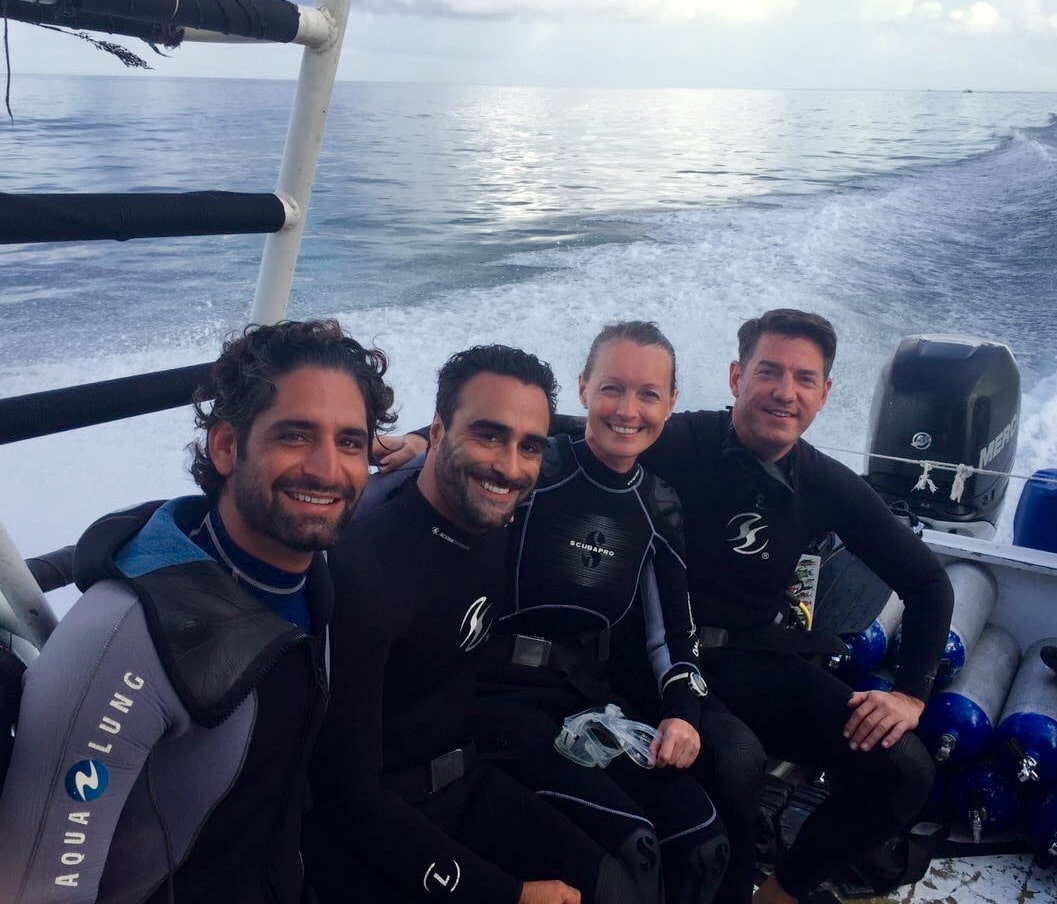News
Diving with… Pedro Luis Ambrosi Zueco, Scuba Caribe Mexico – Playa del Carmen
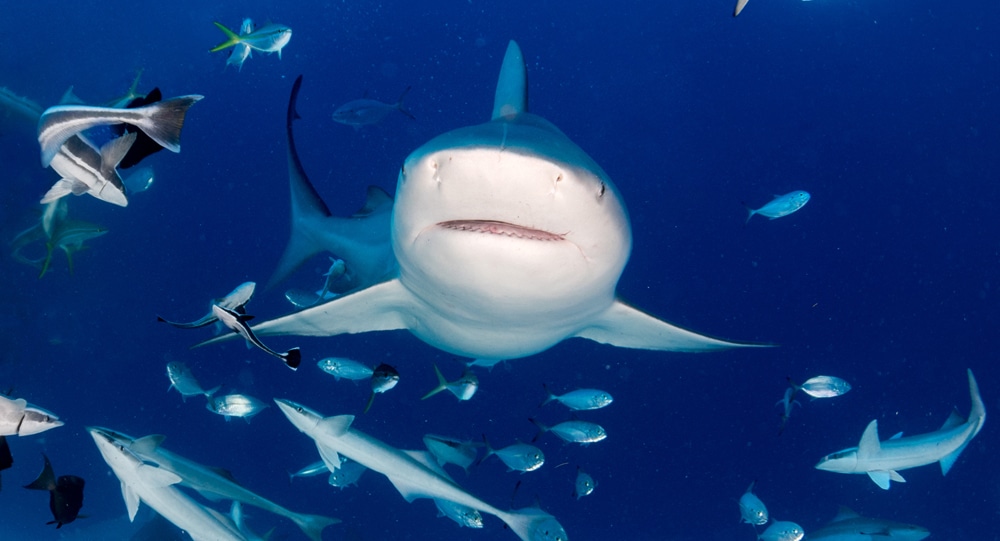
In this ongoing series, we speak to the people who run dive centres, resorts and liveaboards from around the world about their businesses and the diving they have to offer…
Pedro Luis Ambrosi Zueco
What is the name of your business?
Scuba Caribe Mexico
What is your role within the business?
Dive Team Leader Playa del Carmen. Organizing the daily dive operations, supervising and mentoring of dive instructor team, control of company quality standards and staff training.
How long has the business operated for?
Scuba Caribe has been around for 27 years. We have recently received the PADI 25-year of Outstanding Service Member Award.
How long have you dived for, and what qualification are you?
I have been diving since 2001, my latest qualification level in the PADI Ranking is IDC Staff Instructor. I also hold a Full Cave Diver certification. This year will be my 8th year as a dive professional. In my travels I have visited and dived in over 12 countries, my favorite being the Maldives, and a close second place are the cenotes in Mexico.
What is your favorite type of diving?
Any dive with a strong current is always fun for me. Holding your position on the reef in strong currents always held some excitement for me. Maldives diving, usually had some very strong currents so I learned there and have loved it ever since. Diving with sharks holds a high place as well. You can dive with manta rays and turtles and it is fun, but sharks somehow always get my adrenaline pumping. And last but not least: cave diving is always a special experience. The clearest waters in the world, over 300 mts of visibility, the hypnotizing effects of a halocline, the light show provided by the rays of the sun and the rock formations that are thousands of years old.
If you could tell people one thing about your business (or maybe more!) to make them want to visit you what would it be?
Playa del Carmen Mexico has something for everybody. We offer bull shark diving in the wintertime, cavern diving in the amazing cenotes all year round. Cenotes diving is only possible in a handful of countries and Mexico can be considered one of the main destinations where you can do it. We are also one of the few dive operators who do direct dive trips to the island of Cozumel to dive the wonderful reefs there. Not to mention the abundant marine life we have here on our local reefs.
What is your favorite dive in your location and why?
When it comes to local reefs, my favourite spot has to be the Sabalos reef. A colorful reef that has a decent current all year round. The dive site has some hidden little swim-through passages and you can spot a large variety of marine life ranging from barracudas and turtles, to nurse sharks and tiny seahorses.
Of the many, one of my favorite cenotes dives is Tajma Ha. Besides mesmerizing light shows, this cenote has much more to offer for both cavern and cave divers. It’s decorated with stalactites, stalagmites and plenty of hidden fossils. Haloclines in the deeper areas create interesting mirror like effects as divers penetrate the layer of salt water, which is below the fresh water. For cave divers there is the “Chinese Garden”.
In Cozumel, Palancar Caves is my top candidate – a maze of swim throughs and canyons that are beautifully decorated with corals and sponges. Giant lobsters, turtles, rays, nurse sharks and butterfly fish are common here.
What types of diving are available in your location?
Shallow reef diving – we have several local reefs with a nice sandy bottom at around 12 mts – perfect for beginner divers and courses. Also several deeper sites and close by, abundant in life and a nice medium current to along with it. Deep divers are also served as we there is a deep wreck dive – 27 ms, and some deeper reefs as well. Cavern and cave diving in the Riviera Maya cenotes is one of the highlights of any visit to Mexico. As for marine life – in the winter months (Dec – Mar) we have bull sharks coming to give birth, and we do observation dives to have a pretty close up look.
What do you find most rewarding about your current role?
Mentoring new instructors and watching them develop into great professionals with a passion for their job. Teaching them good diving/ teaching habits and the value of good and honest hard work. Finding solutions for problems and working and teaching with the local staff. Mexicans have an amazing work mentality and a great sense of humor!
What is your favorite underwater creature?
Mantis Shrimps, ever since i saw these little critters in the Maldives I have been fascinated by them. So small yet so deadly and fast, and very comical looking too. This little shrimp has the fastest attack in world, it strikes as fast as a speeding bullet. It strikes so fast that it creates a vacuum bubble, when this bubble collapses it causes a small shockwave that knocks out its prey. Not bad for a little shrimp is it not? It is very intelligent as well. My favorite of the species is the peacock shrimp.
Are there any exciting changes / developments coming up in the near future?
This year we launched our direct to Cozumel dive service and this kicked off really well. We hope to expand our cenote and Cozumel diving aspects.
Is your center involved in any environmental work?
We have adopted a dive site with PADI Project Aware and are doing monthly clean up dives there. We tend to use as much environmentally responsible materials and ways of working. We banned the use of plastic cups and are using paper ones on our boats. We switched to a mostly digital system for all student manuals, thanks to PADI and their digital platform this has been a great change as customers don’t have to use much paper anymore. All our courses and Discover Scuba Diving experiences are begun with explaining the value and importance of the coral reefs and to be careful with them. We are a member of the Saving our Sharks organization in Playa del Carmen. Every winter, we dive with these amazing creatures and all guests are explained the importance of sharks and their role in the ecosystem. Also every diver that does these dives with us, automatically donates to this organization.
How do you see the SCUBA / Freediving / snorkeling industry overall? What changes would you make?
The diving industry is constantly evolving, new technology and and new methods make it safer and more accessible to more and more people. It is a dive center’s responsibility to uphold the highest safety standards. Snorkeling is one of the biggest activities in any destination, therefore this has to be one of the best supervised. We do our part in training and updating our staff in proper procedures. Having regular staff trainings and evaluations is a really indispensable tool for any centre to uphold its quality and safety standards.
What would you say to our visitors to promote the diving you have to offer?
Mexico has it all. If you want to learn how to dive, we have excellent and beautiful shallow reefs to take you for your first dives. Want to improve your level of diving, deep, drift and wreck dives are here as well. If you are looking for some unique experiences, then try cenotes diving. The ancients Mayans considered these caverns entrances to another world – Come and see for yourself what they meant. And lastly, for the thrill seeker: nothing beats a dive where you are circled by several 6-8ft/2-4m Bull sharks. Up close and personal – you bet!
Where can our visitors find out more about your business?
- www.scubacaribe.com
- info@scubacaribe.com
- @scubacaribemex
- @scubacaribe
Blogs
Northern Red Sea Reefs and Wrecks Trip Report, Part 2: Wall to Wall Wrecks

Jake Davies boards Ghazala Explorer for an unforgettable Red Sea diving experience…
The second day’s diving was a day full of wreck diving at Abu Nuhas, which included the Chrisoula K, Carnatic, and Ghiannis D. The first dive of the day was onto the Chrisoula K, also known as the wreck of tiles. The 98m vessel remains largely intact where she was loaded with tiles which can be seen throughout the hold. The stern sits at 26m and the bow just below the surface. One of the highlights of the wreck is heading inside and seeing the workroom where the machinery used for cutting the tiles are perfectly intact. The bow provided some relaxing scenery as the bright sunlight highlighted the colours of the soft coral reef and the many reef fish.

Following breakfast, we then headed to the next wreck, which was the Carnatic. The Carnatic is an 89.9m sail steamer vessel that was built in Britain back in 1862. She ran aground on the reef back in 1869 and remains at 27m. At the time, she was carrying a range of items, including 40,000 sterling in gold. An impressive wreck where much of the superstructure remains, and the two large masts lay on the seafloor. The wooden ribs of the hull provide structures for lots of soft corals, and into the stern section, the light beams through, bouncing off the large shoals of glass fish that can be found using the structure as shelter from the larger predators that are found outside of the wreck.

The final wreck at Abu Nuhas was the Ghiannis D, originally called ‘Shoyo Maru,’ which was 99.5m long and built in Japan back in 1969 before becoming a Greek-registered cargo ship in 1980. The ship then ran aground on the reef on April 19th, 1983, and now sits at the bottom at a depth of 27m. Heading down the line, the stern of the ship remains in good condition compared to the rest of the hull. The highlight of the wreck, though, is heading into the stern section and down the flights of stairs to enter the engine room, which remains in good condition and is definitely worth exploring. After exploring the interior section of the ship, we then headed over to see the rest of the superstructure, where it’s particularly interesting to see the large table corals that have grown at the bow relatively quickly considering the date the ship sank. After surfacing and enjoying some afternoon snacks, we made sure everything was strapped down and secured as we would be heading north and crossing the Gulf of Suez, where the winds were still creating plenty of chop.

The next morning, it was a short hop to Ras Mohammed Nature Reserve for the next couple of days of diving. The 6am wake-up call came along with the briefing for the first site we would be diving, which was Shark & Yolanda. The low current conditions allowed us to start the dive at Anemone City, where we would drift along the steep, coral-filled wall. These dives involved drifts, as mooring in Ras Mohammed wasn’t allowed to protect the reefs. As a dive site, Shark & Yolanda is well-known and historically had a lot of sharks, but unfortunately not so many in recent years, especially not so early in the season. However, there was always a chance when looking out into the blue.

The gentle drift took us along the steep walls of the site, with plenty of anemone fish to be seen and a huge variety of corals. It wasn’t long into the dive before we were accompanied by a hawksbill turtle, who drifted with us between the two atolls before parting ways. Between the two reefs, the shallow patch with parts of coral heads surrounded by sand provided the chance to see a few blue-spotted stingrays that were mainly resting underneath the corals and are always a pleasure to see. With this being the morning dive, the early sunlight lit up the walls, providing tranquil moments. Looking out into the blue, there was very little to be seen, but a small shoal of batfish shimmering underneath the sunlight was a moment to capture as we watched them swim by as they watched us.

Towards the end of the dive, we stopped at the wreck of the Jolanda where the seafloor was scattered with toilets from the containers it was carrying. This provided a unique site to make a safety stop, which was also accompanied by a large barracuda slowly swimming by, along with a hawksbill turtle calmly swimming over the reef as the sun rays danced in the distance.
For the next dive, we headed north to the Strait of Tiran to explore the reefs situated between Tiran Island and Sharm El Sheik, which were named after the British divers who had found them. We started on Jackson before heading to Gordons Reef, where we also did the night dive. All the atolls at these sites provided stunning, bustling coral reefs close to the surface and steep walls to swim along, which always provided the opportunity to keep an eye out for some of the larger species that can be seen in the blue. Midwater around Jackson Reef was filled with red-toothed triggerfish and shoals of banner fish, which at times were so dense that you couldn’t see into the blue. Moments went by peacefully as we enjoyed the slow drift above the reef, watching these shoals swim around under the mid-afternoon sun.

The night dive at Gordon’s Reef was mainly among the stacks of corals surrounded by sand, which was great to explore under the darkness. After some time circling the corals, we came across what we were really hoping to find, and that was an octopus hunting on the reef. We spent the majority of the dive just watching it crawl among the reef, blending into its changing surroundings through changes in colour and skin texture. It’s always so fascinating and captivating to watch these incredibly intelligent animals, in awe of their ability to carry out these physical changes to perfectly blend into the reef. Before we knew it, it was time to head back to the boat to enjoy a well-deserved tasty dinner prepared by the talented chefs onboard.
Check in for the 3rd and final part of this series from Jake tomorrow!
To find out more about the Northern Red Sea reef and wrecks itineraries aboard Ghazala Explorer, or to book, contact Scuba Travel now:
Email: dive@scubatravel.com
Tel: +44 (0)1483 411590
Photos: Jake Davies / Avalon.Red
Marine Life & Conservation
Double Bubble for Basking Sharks

 The Shark Trust is excited to announce that, for two more days only, all donations, large or small, will be doubled in the Big Give Green Match Fund!
The Shark Trust is excited to announce that, for two more days only, all donations, large or small, will be doubled in the Big Give Green Match Fund!
Donate to Basking in Nature: Sighting Giants
The Shark Trust is hoping to raise £10k which will be doubled to £20k. This will go towards Basking in Nature: Sighting Giants. And they need YOUR help to reach they’re goal.
The Shark Trust’s citizen science project is to monitor and assess basking sharks through sightings; encouraging data collection, community engagement, and promoting nature accessibility. This initiative aims to enhance health and wellbeing by fostering a deeper connection with British Sharks.
Campaign Aims
- Increase citizen science reporting of Basking Sharks and other shark sightings to help inform shark and ray conservation.
- Provide educational talks about the diverse range of sharks and rays in British waters and accessible identification guides!
- Create engaging and fun information panels on how to ID the amazing sharks and rays we have on our doorstep! These can be used on coastal paths around the Southwest. With activities and information on how you can make a difference for sharks and rays!
- Promote mental wellbeing through increasing time in nature and discovering the wonders beneath the waves!
Donate, and double your impact. Click Here
-

 News3 months ago
News3 months agoHone your underwater photography skills with Alphamarine Photography at Red Sea Diving Safari in March
-

 News3 months ago
News3 months agoCapturing Critters in Lembeh Underwater Photography Workshop 2024: Event Roundup
-

 Marine Life & Conservation Blogs2 months ago
Marine Life & Conservation Blogs2 months agoCreature Feature: Swell Sharks
-

 Blogs2 months ago
Blogs2 months agoMurex Resorts: Passport to Paradise!
-

 Blogs2 months ago
Blogs2 months agoDiver Discovering Whale Skeletons Beneath Ice Judged World’s Best Underwater Photograph
-

 Gear Reviews2 months ago
Gear Reviews2 months agoGear Review: Oceanic+ Dive Housing for iPhone
-

 Marine Life & Conservation2 months ago
Marine Life & Conservation2 months agoSave the Manatee Club launches brand new webcams at Silver Springs State Park, Florida
-

 News3 months ago
News3 months agoWorld’s Best Underwater Photographers Unveil Breathtaking Images at World Shootout 2023


